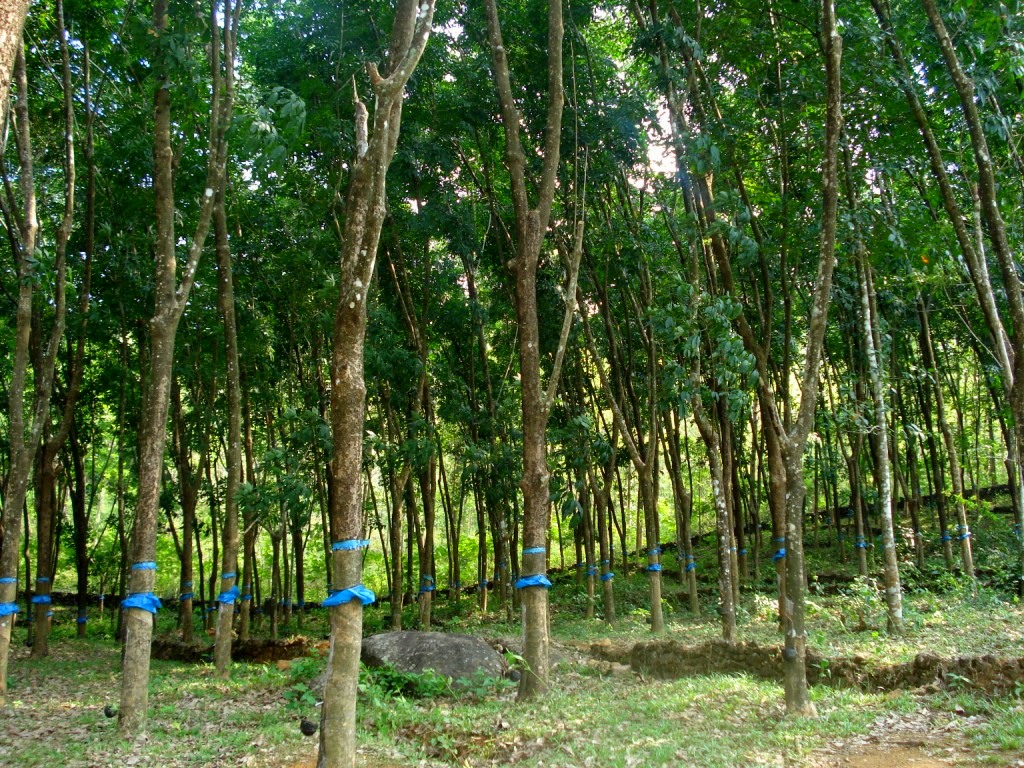Home to the highest number of rubber plantations in the country, Kerala accounts for almost 90 per cent of India’s total natural rubber production.
Brought to India during the British era, the crop continues to remain a great favourite amongst the farmers in the state, with generation after generation taking the reins of its cultivation and production forward.
Amidst all the rubber talk, one priest from Udumbannoor in Thodupuzha district has developed a new variety of the plant that can double the yield, much to the happiness of rubber planters.

Named ‘Thadathil’, Father Thomas, who hails from Cheenikkuzhi, spent three-and-half decades researching and conducting experiments before finally developing the new variety.
According to local daily Mathrubhumi, the new rubber variety offers double the profit, in terms of not just the yield but growth of the plants as well, in comparison to the commonly cultivated variety RRII-105.
It all started in 1983 when Father Thomas purchased 350 saplings of RRII-105 variety from the Rubber Board in Kerala. While the plants were growing, he noticed that one particular sapling grew better than all the other ones and generated about 1.75-litre latex per day once the tapping began.
You may also like: A Town Named After a Spice? Lesser-Known Stories of How 14 Kerala Towns Got Their Unique Names
Intrigued, he cut the vertical part of the tree trunk and discontinued the rubber tapping. Meanwhile, new shoots had started growing nearby the tree, that was used by Father Thomas for budding in the rubber saplings planted across a patch of land.
Over a period of seven years, he observed that the trees shot up to 57cm with visibly thicker barks and generated close to 25 kg of dry rubber, once tapping begun. He also noted that all the 130 experimental trees not only produced an equal and consistent amount of latex but grew to a similar size as well.
Father Thomas believes that a genetic variation in the original sapling must have produced this result.
The man has also opened a nursery with saplings grown using bud woods from the same tree. After hearing about the ‘Thadathil’, farmers have been frequenting his plantation to see the tree for themselves.
In fact, Father Thomas’s chance discovery and subsequent achievements have found its way to publications like ‘Rubber Asia’ and the ‘Rubber’ magazine of Rubber Board. Presently, he is trying to acquire the patent for a new variety.
According to Cissy P. Mathew, who is the Assistant Director of Agriculture in Elamdesam Block, an unusually high production rate was observed during their study in Father Thomas’ plantation.
She also added that a scientific study is required to decipher the actual reason behind the phenomenon, which could either be a genetic mutation or overuse of fertilisers.
Featured Image Inset Source: Mathrubhumi.
Like this story? Or have something to share?
Write to us: contact@thebetterindia.com
Connect with us on Facebook and Twitter.
NEW: Click here to get positive news on WhatsApp!
If you found our stories insightful, informative, or even just enjoyable, we invite you to consider making a voluntary payment to support the work we do at The Better India. Your contribution helps us continue producing quality content that educates, inspires, and drives positive change.
Choose one of the payment options below for your contribution-
By paying for the stories you value, you directly contribute to sustaining our efforts focused on making a difference in the world. Together, let's ensure that impactful stories continue to be told and shared, enriching lives and communities alike.
Thank you for your support. Here are some frequently asked questions you might find helpful to know why you are contributing?

